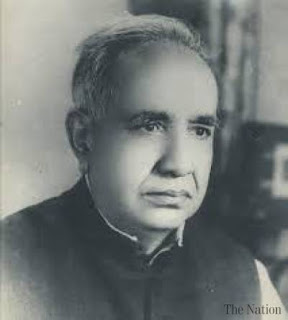Biography of Naseem Hijazi
Sharif Hussain who utilized the nom de plume Hijāzī (Urdu: نسیم حجازی, regularly transliterated as Naseem Hijazi or Nasim Hijazi) (c. 1914– 2 March 1996), was a Urdu author. He was conceived in an Arain family in the town of Sujaanpur close to the town of Dhariwal, in the Gurdaspur area of Punjab, before the freedom of Pakistan; his family settled in Lahore in 1947. He lived a large portion of his life in Pakistan and kicked the bucket on 2 March 1996.
Famous Urdu fiction has had an old custom of noteworthy books. Since the early time of Urdu writing , journalists have utilized notable settings as foundation for their books and enormously engaged their perusers. One of the most seasoned in Urdu, this custom is as yet alive.
Naseem Hijazi is legitimately viewed as the best writer in the class of memorable novel. His genuine name was Sharif Hussain. He was conceived in the year 1914 in the town of Sujanpur, close Dhariwal, in East Punjab. He experienced childhood in a traditionalist situation where perusing or composing books was viewed as something underneath great ethics. His prior drafts were torn away by his dad. Sharif Hussain picked Islamic history as motivation for his fiction and took the pseudonym Naseem Hijazi which showed his passionate association with Hijaz, the blessed place that is known for Mecca and Medina. His first novel Daastan-e-Mujahid turned out in 1944. In years to come he would think of one incredible memorable novel after the other and procure extraordinary distinction. Various films and plays in Pakistan were likewise founded on Naseem Hijazi's books
The extraordinary man was conceived on 19 May 1914 in eastern Punjab. He was an incredible Urdu tale essayist and his genuine name was Muhammad Sharif. His dad Mr. Ibrahim was from a normal class family. He was reviewer in fisheries. He wanted to compose recorded books. His accounts were likewise utilized in various dramatizations and movies. He passed his registration examination in 1932. He filled in as editorial manager in day by day paper "Tanzeem" and "Tameer". He issued another paper with the assistance of his associate Ch. Anayat with the name of "Kohistan" and it was a standout amongst the most famous at the time. As a columnist he composed numerous books which were at their pinnacle of acclaim. In his works he talked about the pinnacle and reducing times of Islamic history. He likewise talked about the famous identities like Muhammad Bin Qasim. He propelled lolly wood film in which move of Muslims from India to Pakistan has been expounded. He was kicked the bucket in 1996 in Rawalpindi and covered in Islamabad. He was a man of character and a keen individual. Every one of the insights regarding his life are given underneath in Urdu and you can peruse it.
Sharif Hussain (who utilized the nom de plume Hijazi) was conceived in 1914. He had a place with an Arain family. He lived in the Sujaanpur close to the town of Dhariwal, a town of Gurdaspur locale. After the production of Pakistan, Naseem Hijazi moved to Pakistan. He remained in Lahore and went through his entire time on earth.
He passed away on 2 March 1996 Lahore.
Akhari Maraka
This epic wrote with regards to sub-landmass and Sultan Mehmood Gazanvi's attack. Sultan Mehmood drew close to multiple times in Indo-Pak and prepared for Muslim heros. This tale likewise portrayed the
This story additionally portrayed the state of Indo-Pak at the time and shades of malice of Hindu standing framework. The book rotates around the most memorable triumph of Somnath.
Kaleesa Aur Aag
Kaleesa Aur Aag epic portrayed the last battle of Muslims to remain in Spain. Be that as it may, Muslim lost their standards in Andalus.
Naseem Hijazi referenced the reasons and condition why Muslim lost their huge realm in Europe.
His tale composing was profoundly influenced by his news-casting. He was committed to truth and authenticity. He gave a motivator to honest and reasonable composition. Or maybe he established this convention of honest and reasonable composition. He generally offered significance to the welfare of the laborers of papers yet all was futile as he needed to keep himself isolated and detached from the paper obviously. In this section I have likewise introduced a portion of his noteworthy publications and Kohistan's developments and the prevalence of various segments of the papers among the general population. The journalistic conventions, which Naseem Hijazi had presented, are as yet a wellspring of light in the field of reporting. In the end novel composing has been profoundly influenced by news-casting. In the fourth section I have talked about the co-appointment among novel and history and all the while I have displayed an examination audit of the distinctive verifiable certainties accessible in the books of Naseem Hijazi.


0 Comments